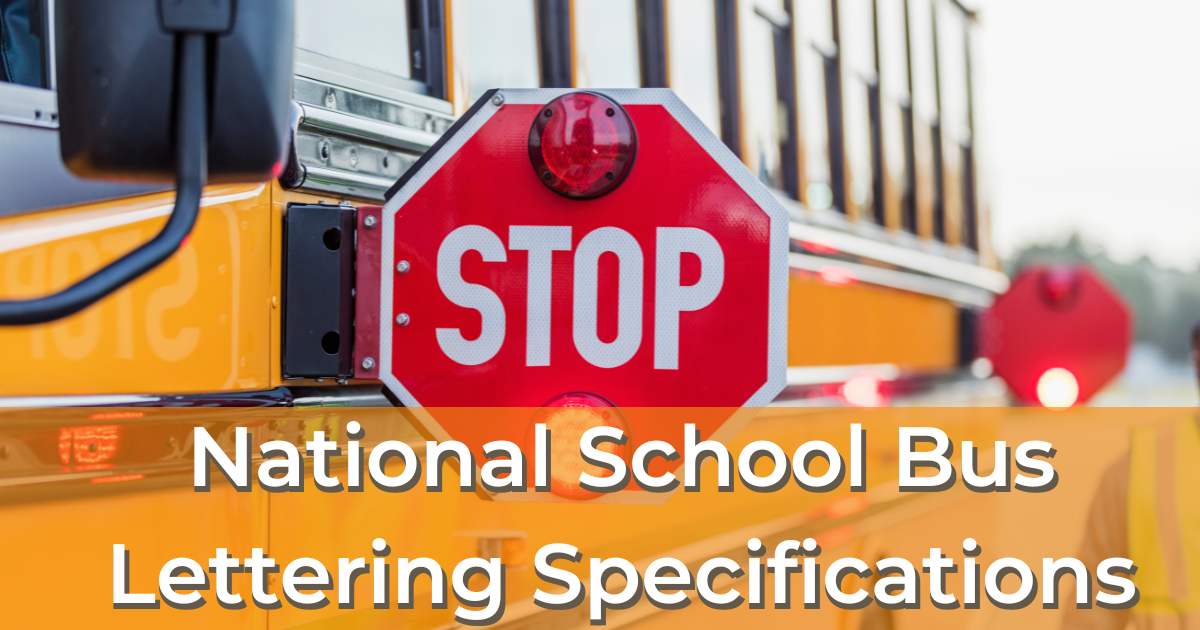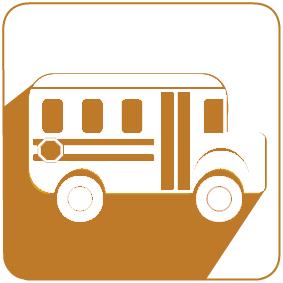Table of Contents
Understanding National School Bus Lettering and Decal Standards
Information regarding our guide on national school bus lettering and decal standards comes directly from:
National School Transportation Specifications and Procedures guide (NSTSP)
National Highway Traffic Safety Administration (NHTSA) FMVSS 217
and
National Fire Protection Association (NFPA)
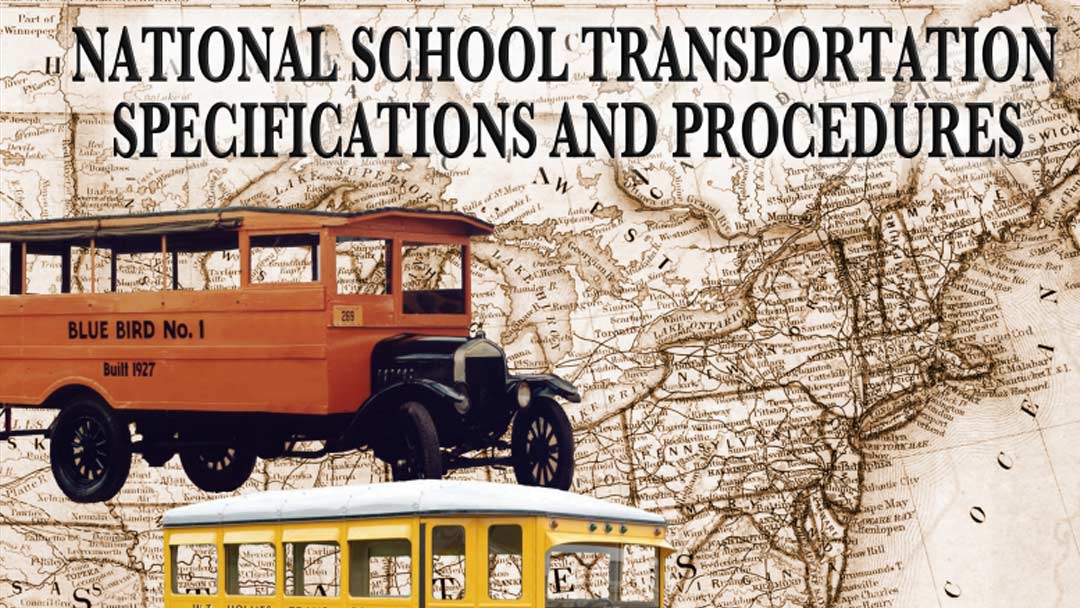
We put together this guide, National School Bus Lettering and Decal Standards, to help those needing quick references for lettering and labeling their school bus. While we’ve tried to cover most of the essentials, local and state laws might have more rules we don’t mention.
In the U.S., states usually follow many of the suggestions of the national school bus standards to keep things on the same page. Some states add or adjust a few of their own rules to suit their needs. While NSTSP guidelines are suggestions, there are must-follow federal rules from government agencies like the National Highway Traffic Safety Administration (NHTSA) and the National Fire Protection Association (NFPA).
Regarding labeling, the NHTSA and NFPA cover emergency exit and fuel labeling.
Again, the National Highway Traffic and Safety Administration and National Fire Protection Association rules are non-negotiable and keep school buses safe nationwide.
Much of our national school bus lettering and decal standards guide comes from the “National School Transportation Specifications and Procedures” guide. This manual comes from the Sixteenth National Congress on School Transportation and lays out suggested standards for how a school bus should look and work. The NSTSP Guide is up for a refresh in 2025.
Identifying Equipment Compartments
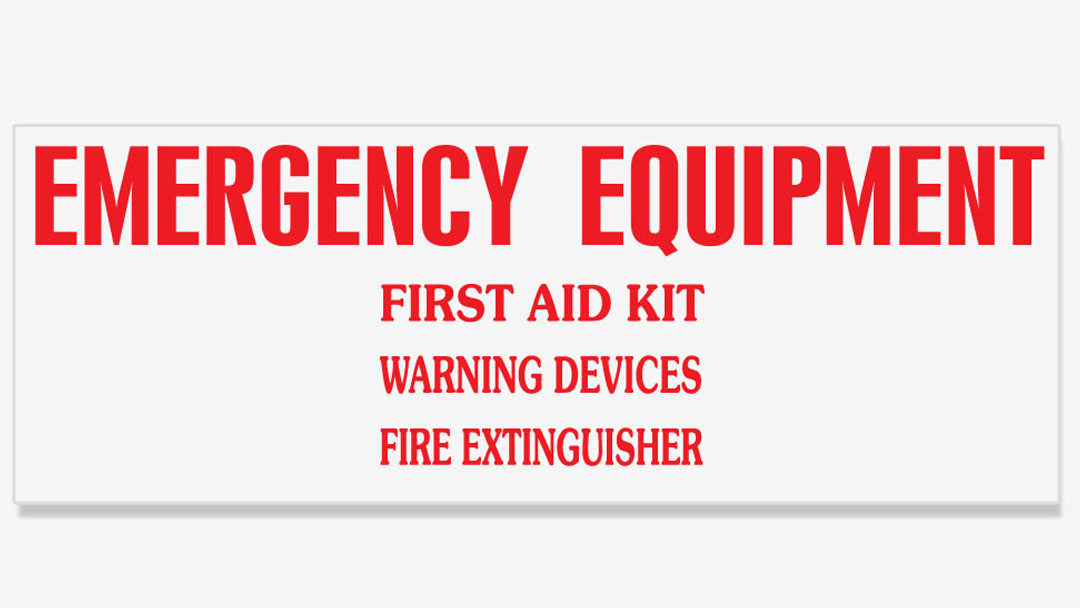
NSTSP – Emergency equipment compartments vital for the safe operation of a school bus must be clearly labeled.
The lettering should be at least one inch high and accurately identify each piece of equipment inside.
Emergency Exit Labeling

In this National School Bus Lettering and Decal Standards guide, we’ve used the National Highway Transportation Safety Administration’s FMVSS 217 to cover the labeling of Emergency doors and windows. We’ve linked to the complete document at the bottom of the page. This document covers federal School Bus Emergency Exits and Window Retention and Release guidelines.
Emergency Exit Lable
NHTSA – Each required Emergency Exit is labeled with the words “Emergency Exit” or “Emergency Door” as appropriate in letters at least 2 inches high of a color that contrasts with its background.
Emergency Doors
NHTSA – The designation ”Emergency Exit” or “Emergency Door” is located at the top of, or directly above the exit door on both inside and outside surfaces
Roof Exits
NHTSA – The designation for roof exits is located on an inside surface of the exit, or within 30 cm of the roof exit opening.
Exit Operating Instructions
NHTSA – Exit Operating Instructions indicate all motions required to unlatch and open the exit, in letters at least 1cm (3/8″) high and of a color that contrasts with its background, shall be located within 15 cm (6″) of the release mechanism on the inside surface of the bus.
Concise operating instructions describing the motions necessary to unlatch and open the emergency exit, in letters at least 1 centimeter (3/8-inch) high of a color that contrasts with its background, shall be located within 15 centimeters (6 inches) of the release mechanism on the inside surface of the bus.
Prominent School Bus Identification

NSTSP – The letters “SCHOOL BUS” must be prominently displayed in black letters, at least eight inches high, on both the front and rear of the bus or on signs attached to it. These letters should be placed as high as possible without hindering visibility and must conform to “Series B” of Standard Alphabets for Highway Signs. The “SCHOOL BUS” lettering must have a reflective background or be backlit optionally.
Note: Multifunction school activity buses are exempt from these requirements.
Beltline Lettering and other Lettering
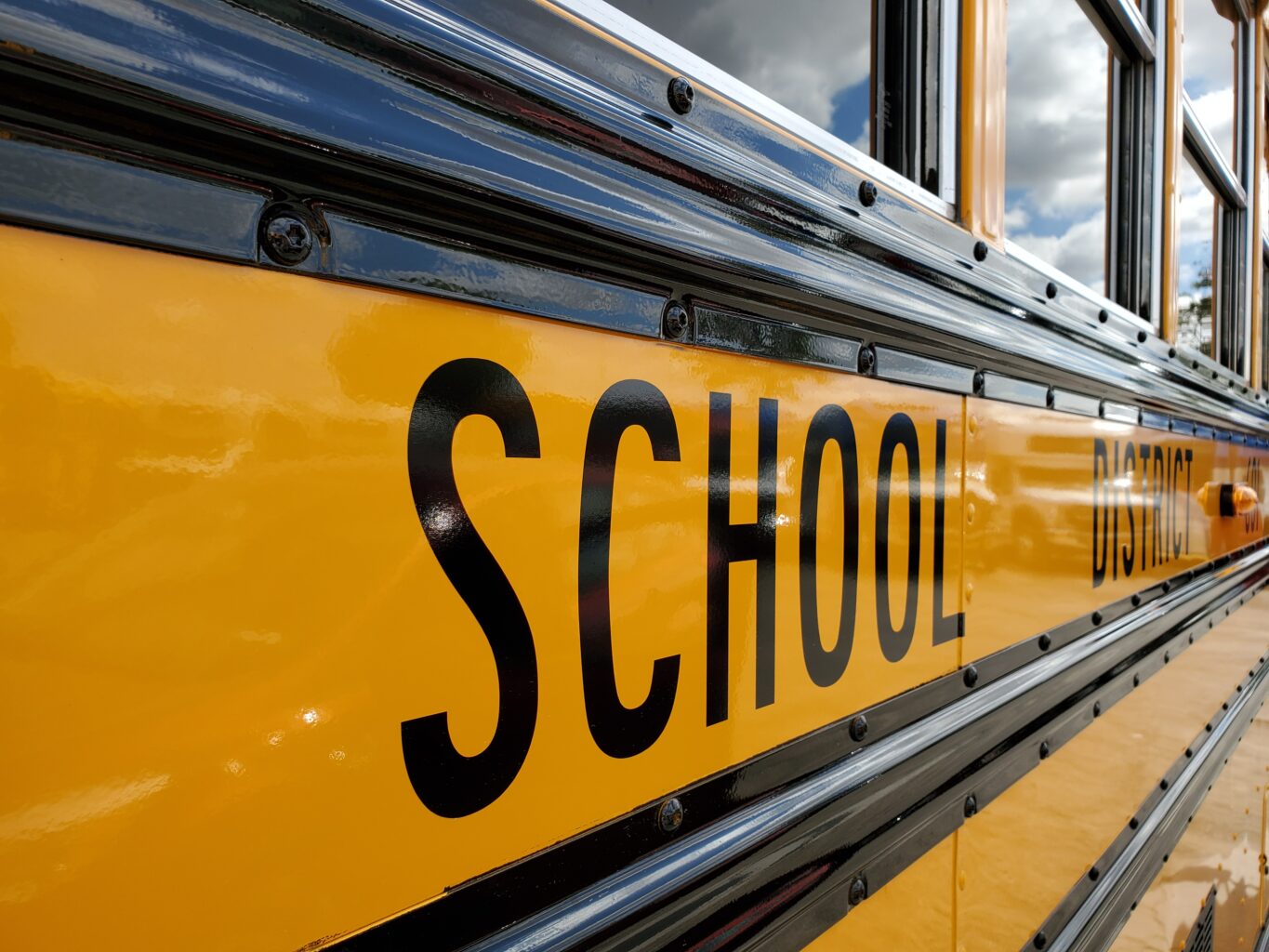
NSTSP – Additional lettering information includes the name of the district, the bus company, or the bus owner displayed at the beltline. The bus identification number must be displayed on the bus’s front, sides, and rear.
The bus’s exterior can also display other lettering, numbering, or symbols. These might include a minimum 12-inch high identification number on top of the bus; a 2-inch high label for the battery compartment; marks, letters, or logos not exceeding 64 square inches near the entrance door; symbols indicating the bus is equipped for students with special needs; lettering related to school bus flashing signal lamps, electronic warning signs, and railroad stop procedures; and identification of the fuel type in 1-inch lettering next to the fuel filler opening.
Reflective Material and Striping
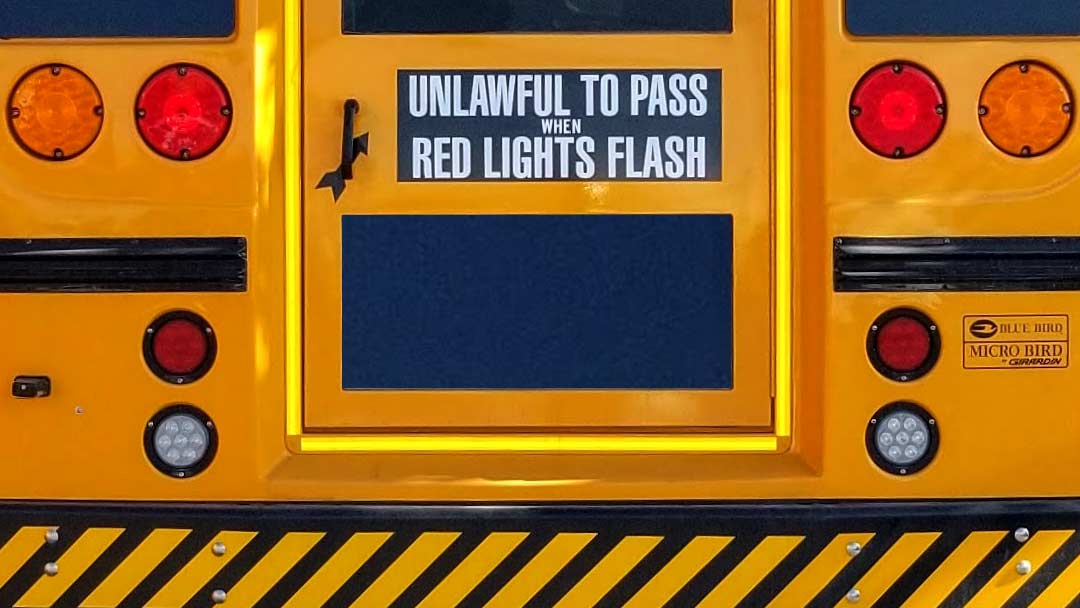
This section of our National School Bus Lettering and Decal Standards guide follows NHTSA and NSTSP guidelines. Retroreflective materials are crucial to making school buses visible and identifying their Emergency Exit locations, especially under low-light conditions. Once again, NHTSA guidelines are not optional and must be followed.
Emergency Exit Reflective
NHTSA 217 -Each required exterior Emergency Exit opening is outlined around its perimeter with a 2.5 cm (1-inch) wide retro-reflective tape of red, white, or yellow color
Bumper Reflective
NSTSP – The front and rear bumper may bear two strips of non-contrasting retroreflective material angled 45 degrees downward towards the centerline of the pavement.
School Bus Rear
NSTSP – The rear of the bus should be marked with strips of retroreflective NSBY (non-school bus yellow) material by FMVSS (Federal Motor Vehicle Safety Standards) No. 131 and 217. The “SCHOOL BUS” signs should also be marked with retroreflective NSBY material. The sides of the bus should have at least an one ¾ inch retroreflective NSBY strip, extending the length of the bus body, positioned between the floor line and the beltline.
Batteries
NSTSP – The location of the battery(ies) identified by the word “BATTERY” or
“BATTERIES” on the battery compartment door in two-inch lettering;
Fuel
This section of our National School Bus Lettering and Decal Standards guide follows NFPA and NSTSP guidelines. NFPA Code Manuals can be found on their website, linked at the bottom of the page. Once again, NFPA Guidelines are nonoptional guidelines and must be followed.
Gas and Diesel
NSTSP – Identification of fuel type in 1-inch lettering adjacent to the fuel filler opening.
Propane
NFPA – Liquid Propane vehicles shall be identified with a weather-resistant diamond-shaped label located on an exterior vertical or near vertical surface on the lower right rear of the vehicle (on the trunk lid of a vehicle so equipped, but not on the bumper of any vehicle) inboard from any other markings. The label shall be approximately 4 3/4 in. (120 mm) long by 3 1/4 in. (83 mm) high. The marking shall consist of a border and the word PROPANE [1 in. (25 mm) minimum height centered in the diamond] in silver or white reflective luminous material on a black background.

CNG
NFPA – Each vehicle shall be identified with a weather-resistant, diamond-shaped label located on an exterior vertical surface or near-vertical surface on the lower right rear of the vehicle (e.g., on the trunk lid of a vehicle so equipped but not on the bumper of any vehicle) inboard from any other markings. The label shall be a minimum of 4.72 in. long × 3.27 in. high (120 mm × 83 mm). The marking shall consist of a border and the letters “CNG” [1 in. (25 mm) minimum height centered in the diamond] of silver or white reflective luminous material on a blue background.

MANUAL SHUT-OFF VALVE
NFPA – Where a manual valve is used, the valve location shall
be indicated with the words “MANUAL SHUT-OFF VALVE.” A weather-resistant decal or label with red, blue, or black letters on a white or silver reflective background shall be used.
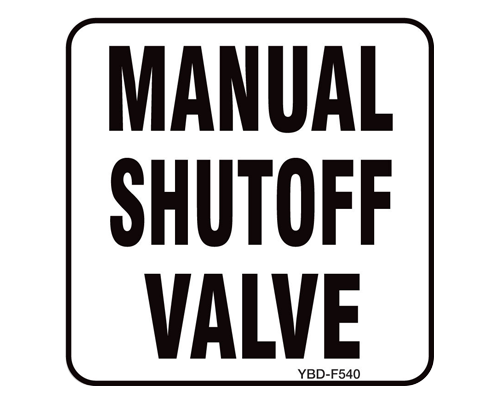
OTHER
NSTSP – Symbols identifying the bus as equipped for or transporting students with
special needs as noted in SPECIALLY EQUIPPED SCHOOL BUS SPECIFICATIONS
Lettering on the rear of the bus relating to school bus flashing signal lamps or
electronic warning sign and Lettering relating to railroad stop procedures
Material Consistency
NSTSP – Vinyl lettering colors should match adjacent body sections for consistency and harmony.
While it may seem minor, the lettering, decals, stickers, and reflective striping on a school bus play an integral role in ensuring the vehicle’s safety, functionality, and identification.
So, next time you spot a school bus, you may recognize more of the little details and the rules that make them work.
Sources
The safety and visibility of school buses are essential to ensuring students’ well-being during their daily commute. One of the ways to enhance their visibility and safety is through standardized labeling. Lettering, decals, stickers, and reflective striping on school buses serve multiple purposes. They identified the bus as a school vehicle. They identify emergency exits. They identify emergency equipment locations, and they provide important safety warnings.
While these standards can vary from state to state, this article is meant to show the specific guidelines for National School bus decal standards. The specifications discussed here are sourced from the following:
National School Transportation Specifications and Procedures
NATIONAL HIGHWAY TRAFFIC SAFETY ADMINISTRATION FMVSS 217
National Fire Protection Association

